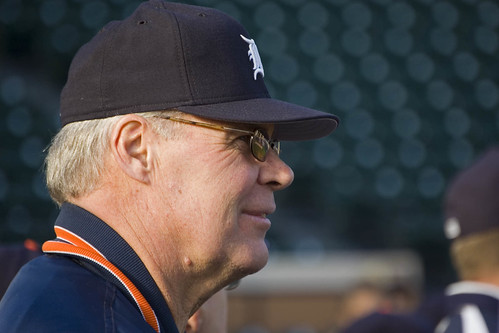Camden Yards Breathed Life Into Baseball Stadium Design
Thank goodness for Camden Yards.
Actually, the official name is Oriole Park at Camden Yards, and the superfluous words are about the only thing wrong with it. I've never set foot there, but you don't have to, in order to appreciate what OP@CY did for the MLB-watching experience.
Prior to Camden Yards' opening in 1992, baseball stadiums were in a rut. Nothing new, really -- other than "new" Comiskey Park in Chicago, which was a huge disappointment for its lack of charm and aesthetic worth. We were still being subjected to the likes of Veterans Stadium in Philadelphia, Three Rivers in Pittsburgh, Riverfront in Cincinnati, and even the -- yecch -- Astrodome in Houston.
The MLB stadium needed a return to its roots, and badly.
Enter Camden Yards, which ushered in a new, "retro" era of manufacturing baseball parks.
OP@CY was built right smack in the middle of the city, which almost forced it to have nooks and crannies, along with the foreboding warehouse wall beyond the right field fence. It had natural grass, of course, and it was fitting that Cal Ripken, Jr. should break Lou Gehrig's consecutive-game playing streak in a retro park such as Camden Yards -- a park much like the ones Gehrig toiled in back in the day.

Others followed, in different cities -- other parks that eschewed the "cookie cutter" for a more customized look.
Jacobs Field in Cleveland. Safeco Field in Seattle. Miller Park in Milwaukee. Comerica Park in Detroit. And so on. If you look around, you'll find very few offenders. Obviously, the Metrodome springs to mind, but its days are thankfully numbered. Maybe Toronto will get off the dime and replace Skydome (or whatever they call it nowadays).
Baltimore's old structure, Memorial Stadium, was a minor league ballpark converted into a larger, more major league size when the St. Louis Browns moved to Baltimore in the early-1950s. And it served the Orioles well -- along with the NFL's Colts. Lots of big baseball and football games were played in Memorial Stadium.
The funny thing is, today's retro parks are starting to look alike, too -- but at least it's in a good way. If you look at aerial shots of Comerica, or Miller Park, or Pittsburgh's park, they look similar -- especially when it comes to the large scoreboards looming in left field. But it's a similar look I can abide, unlike those God-awful, round monstrosities they had a fetish for building in the 1970s.
So tip your hat to OP@CY. If it wasn't for it, I shudder to think where we'd be, baseball stadium-wise.
"New" Veterans Stadium?
The horror of it all.
Actually, the official name is Oriole Park at Camden Yards, and the superfluous words are about the only thing wrong with it. I've never set foot there, but you don't have to, in order to appreciate what OP@CY did for the MLB-watching experience.
Prior to Camden Yards' opening in 1992, baseball stadiums were in a rut. Nothing new, really -- other than "new" Comiskey Park in Chicago, which was a huge disappointment for its lack of charm and aesthetic worth. We were still being subjected to the likes of Veterans Stadium in Philadelphia, Three Rivers in Pittsburgh, Riverfront in Cincinnati, and even the -- yecch -- Astrodome in Houston.
The MLB stadium needed a return to its roots, and badly.
Enter Camden Yards, which ushered in a new, "retro" era of manufacturing baseball parks.
OP@CY was built right smack in the middle of the city, which almost forced it to have nooks and crannies, along with the foreboding warehouse wall beyond the right field fence. It had natural grass, of course, and it was fitting that Cal Ripken, Jr. should break Lou Gehrig's consecutive-game playing streak in a retro park such as Camden Yards -- a park much like the ones Gehrig toiled in back in the day.

Others followed, in different cities -- other parks that eschewed the "cookie cutter" for a more customized look.
Jacobs Field in Cleveland. Safeco Field in Seattle. Miller Park in Milwaukee. Comerica Park in Detroit. And so on. If you look around, you'll find very few offenders. Obviously, the Metrodome springs to mind, but its days are thankfully numbered. Maybe Toronto will get off the dime and replace Skydome (or whatever they call it nowadays).
Baltimore's old structure, Memorial Stadium, was a minor league ballpark converted into a larger, more major league size when the St. Louis Browns moved to Baltimore in the early-1950s. And it served the Orioles well -- along with the NFL's Colts. Lots of big baseball and football games were played in Memorial Stadium.
The funny thing is, today's retro parks are starting to look alike, too -- but at least it's in a good way. If you look at aerial shots of Comerica, or Miller Park, or Pittsburgh's park, they look similar -- especially when it comes to the large scoreboards looming in left field. But it's a similar look I can abide, unlike those God-awful, round monstrosities they had a fetish for building in the 1970s.
So tip your hat to OP@CY. If it wasn't for it, I shudder to think where we'd be, baseball stadium-wise.
"New" Veterans Stadium?
The horror of it all.










 Proud Member of DIBS
Proud Member of DIBS

0 Comments:
Post a Comment
<< Home